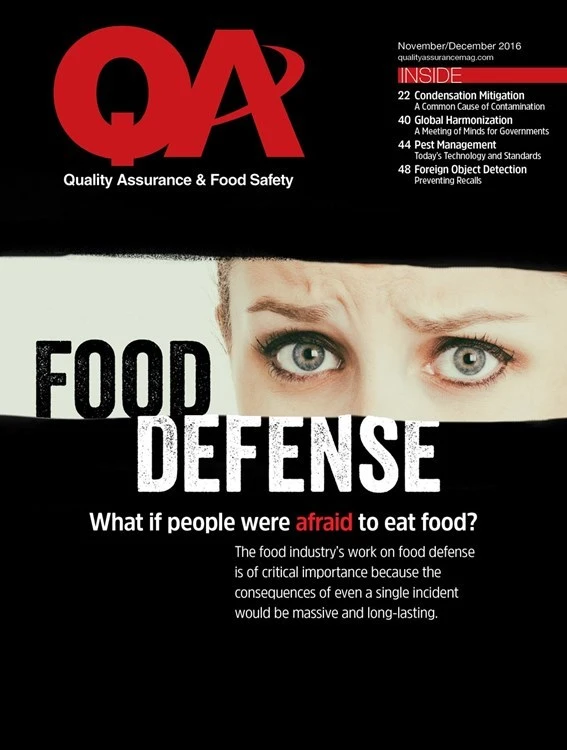
Food Safety. Food Defense. Food Security.
In mentioning the topic of this issue’s cover profile (Food Defense: What if we were afraid to eat food?) to non-industry peers and friends, I’ve found that, while these phrases have separate and distinct meanings for the food industry, they are virtually interchangeable in the minds of most others. In fact, I am often faced with a blank look when I mention one vs. the other (e.g., Me: “The conference focused on food defense vs. food safety.” Response: “Huh?”) Even within the industry, the phrases food security and food protection aren’t always well understood.
With that in mind, as well as understanding that new industry personnel and non-industry Internet browsers are also likely to be reading the articles of QA magazine’s digital issue, this seems a good time to employ QA’s mission to inform and educate. So, when I am faced with that blank look, I’ve learned to lean on the very briefest of definitions:
- Food safety is taking steps to prevent the unintentional contamination or adulteration of food.
- Food defense is guarding against the intentional contamination or adulteration of food.
- Food security is ensuring that all people have access to abundant and healthy foods.
- Food protection has come to mean an integration of all of these.
Unfortunately, none of these are as simple as their definitions. If they were, we wouldn’t need the hundreds of pages that make up the Food Safety Modernization Act, or what is likely to be the thousands of pages of accompanying guidance. We wouldn’t need the specific rule focused on Intentional Adulteration, or the sections on economically motivated adulteration in the Preventive Controls rule. We wouldn’t need the focus of the World Health Organization, GFSI, and a multitude of other global groups on feeding the world. And, we wouldn’t need the magazines — yes, such as Quality Assurance & Food Safety (QA) which you are in the midst of reading — or the websites, consultants, and books continually discussing, informing, and educating on the many facets of each.
But they aren’t, so we do.
And speaking of QA … you may be thinking that food quality should be a part of the above list. While it is, certainly, of critical importance, it is even more difficult to put into a neatly defined box, partly because much of it is very subjective based on aspects desired by the producer, the customer, and the consumer. In fact, a 1973 Journal of Food Distribution Research article, What is Food Quality by Marie Ferree then of the University of California Berkeley, sums it up quite well: “What is food quality? It’s a nice tidy little question with as many answers as there are people to give them.” And those answers, she stated, are found in another question: “Quality of what, and according to whom?”
So while the industry may not always get as much direction and particulars as it would like to have from the agencies that make the rules on food safety and defense, these are, at least, a great deal more objective. And even with the variation that exists among the facilities, products, and processes of our vastly disparate industry, the goal of protecting our food supplies is a fairly simple concept at its root.
The author is Editor of QA magazine. She can be reached at llupo@gie.net.

Explore the December 2016 Issue
Check out more from this issue and find your next story to read.
Latest from Quality Assurance & Food Safety
- Chef Robotics Introduces Pat-Down Capability for Meal Presentation and Sealing
- USDA Launches Regenerative Pilot Program
- Indoor Ag-Con Adds Food Safety Track to Conference Lineup
- IDFA Recognizes Federal Officials for Support of U.S. Dairy Industry
- Tetra Pak Acquires Bioreactors.net
- Fresh Del Monte Receives Rabobank Leadership Award
- São Paulo Earns Guinness World Record for Largest Municipal Food Security Program
- KPM Analytics Releases Ready-to-Use NIR Calibration Packages





